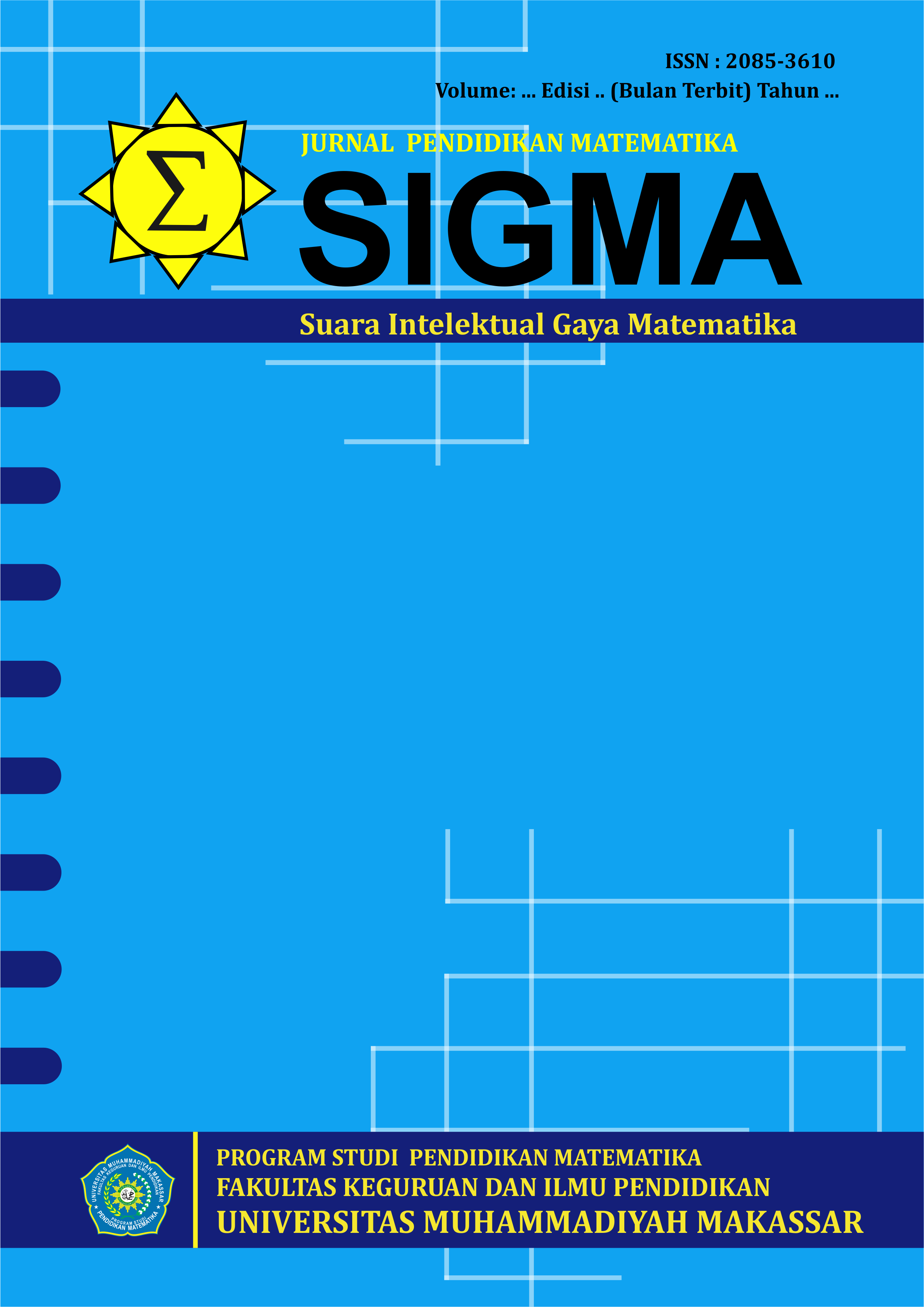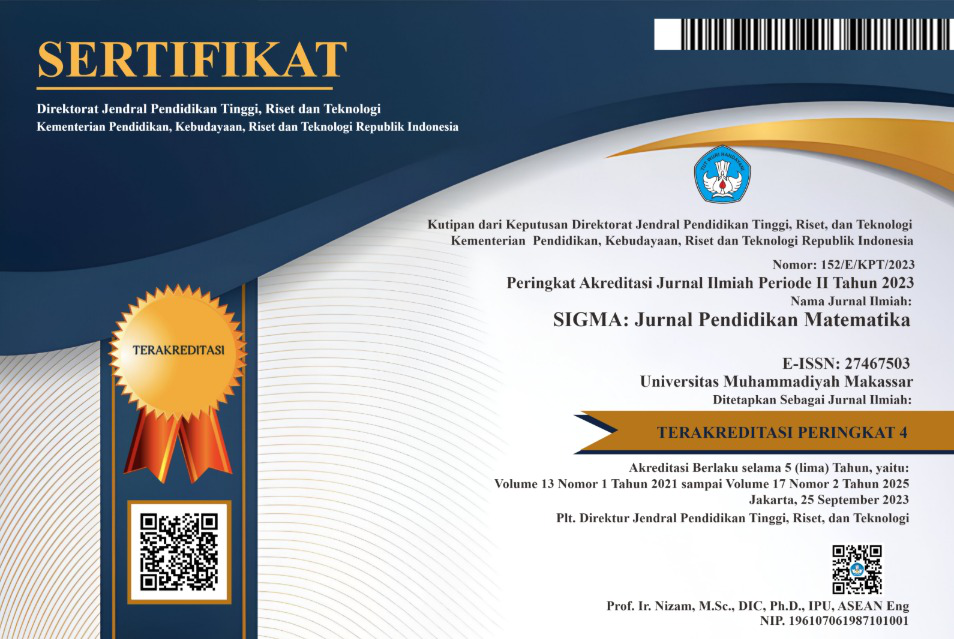PENGGUNAAN MODEL GARIS BILANGAN VERTIKAL OLEH SISWA DALAM MENYELESAIKAN MASALAH KONTEKSTUAL
DOI:
https://doi.org/10.26618/sigma.v14i2.9413Keywords:
number lines, contextual problemsAbstract
Many teachers in Indonesia teach students horizontal number lines rather than vertical number lines. However, there are students who use vertical number lines to solve contextual problems that have never been taught in schools. Therefore, this study aims to find out why students use vertical number lines to solve contextual problems. This research is a qualitative research where data is collected by tests and interviews. The results showed that students used vertical number lines based on the context of the given questions.References
Beswick, K. (2011). Positive experiences with negative numbers. Australian Mathematics Teacher, 67(2), 31–40.
Bicknell, B., & Young-loveridge, J. (2015). Young Children ’ s Number Line Placements and Place -Value Understanding. Paper presented at the Annual Meeting of the Mathematics Education Research Group of Australasia (MERGA).
Diezmann, C. M., Lowrie, T. O. M., & Sugars, L. A. (2010). Primary Students’ Success on the Structured Number Line, Australian Primary Mathematics Classroom, 15(4), 24-28.
Hartnett, J. (2005). Changing the focus of computation instruction in primary schools: Putting the research into practice. Making Mathematics Vital: Proceedings of Twentieth Biennial Conference of The Australian Association of Mathematics Teachers (pp. 1-416). Adelaide, South Australia: The Australian Association of Mathematics Teachers.
Heeffer, A. (2010). Historical objections against the number line, Science & Education, 20(9), 1–19.
Heuvel-panhuizen, M. Van Den. (2008). Learning From “ Didactikids ”: An Impetus for Revisiting the Empty Number, Mathematics Education Research Journal, 20(3), 6–31.
Klein, A. S., & Beishuizen, M. (1998). The Empty Number Line in Dutch Second Grades : Realistic Versus Gradual Program Design, Journal for Research in Mathematics Education, 29(4), 443–464.
Miles, M. B., Huberman, A. M., & Saldaña, J. (2018). Qualitative data analysis: A methods sourcebook. Sage publications.
Shanty, N. O. (2016). Investigating students ’ development of learning, Journal on Mathematics Education, 7(2), 57–72.
Stephan, M., & Akyuz, D. (2012). A Proposed Instructional Theory for Integer Addition and Subtraction, (April 2016). https://doi.org/10.5951/jresematheduc.43.4.0428
Ural, A. (2016). 7th Grade Students ’ Understandings of Negative Integer, Journal of Studies in Education, 6(2), 170–179. https://doi.org/10.5296/jse.v6i2.9075
Walkington, C., & Petrosino, A. J. (2013). Supporting Algebraic Reasoning through Personalized Story Scenarios : How Situational Understanding Mediates Performance, Mathematical Thinking and Learning, 15(2), 89-120.
Yilmaz, A., Akyuz, D., & Stephan, M. (2019). Middle Grade Students ’ Evoked Concept Images of Number Line Models and Their Calculation Strategies with Integers Using These Models, International Journal of Education in Mathematics, Science and Technology, 7(1), 93-115.. https://doi.org/10.18404/ijemst.509292
Downloads
Additional Files
Published
Issue
Section
License
With the receipt of the article by the SIGMA: Jurnal Pendidikan Matematika Editorial Board and the decision to be published, then the copyright regarding the article will be diverted to SIGMA: Jurnal Pendidikan Matematika.
Universitas Muhammadiyah Makassar as the publisher of SIGMA: Jurnal Pendidikan Matematika hold the copyright regarding all the published articles in this journal.Universitas Muhammadiyah Makassar has the right to multiply and distribute the article and every author is not allowed to publish the same article that was published in this journal.
The manuscript authentic and copyright statement submission can be downloaded ON THIS FORM.






